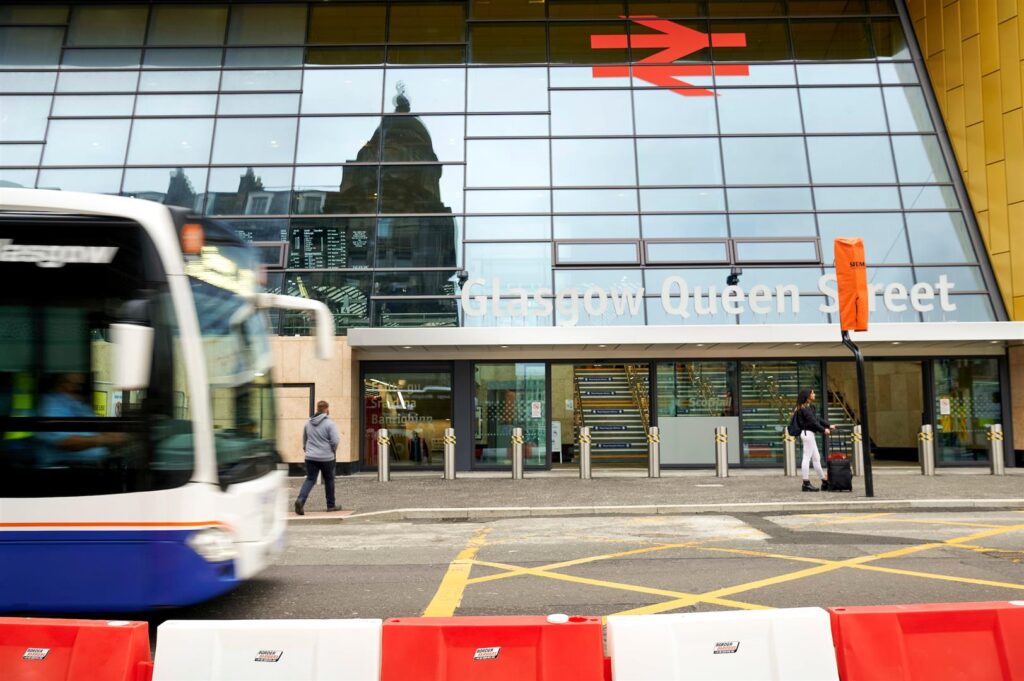
Creating a safe commute
As we hit six months since the beginning of the Covid-19 pandemic, the public transport sector is still facing significantly reduced demand across all services.
Compared with this time last year, bus and rail journeys in Scotland are down 50% and 70%, respectively.
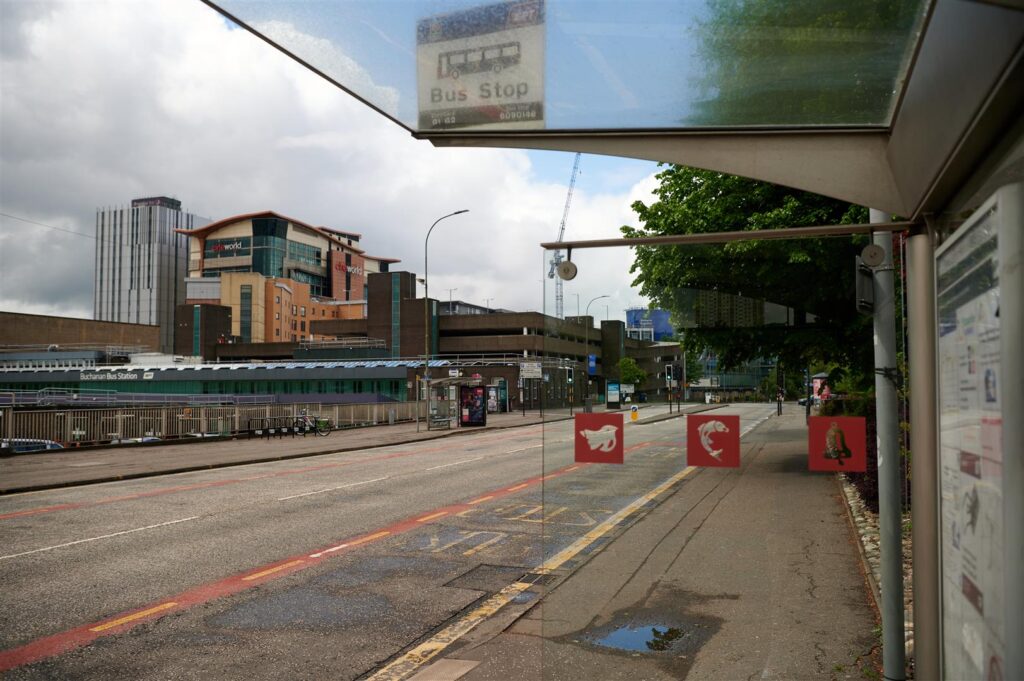
However, with more people now returning to their physical workplaces, and with the return to schools and universities, a considerable uptake in daily public transport use is expected over the coming months.
If not managed correctly, we could see delays in journey times for passengers, and increased demand could make physically distancing near impossible.
In order to address this concern, Sustrans is working with Scottish local authorities through its Spaces for People programme to ensure that people are able to access and use the transport services they need safely.
Key case study
Central Station and Queen Street Station are the two major train stations in the heart of Glasgow city centre.
The routes covered not only facilitate travel to and from work, but also provide access to local and regional healthcare providers, grocery stores, leisure facilities and green spaces.
Over the last few months, both sites have undergone significant temporary infrastructure changes thanks to Glasgow City Council‘s £7.5 million Spaces for People project.
Queen Street station
George Street, North Hanover Street and Dundas Street provide the key access points to the newly renovated Queen Street Station.
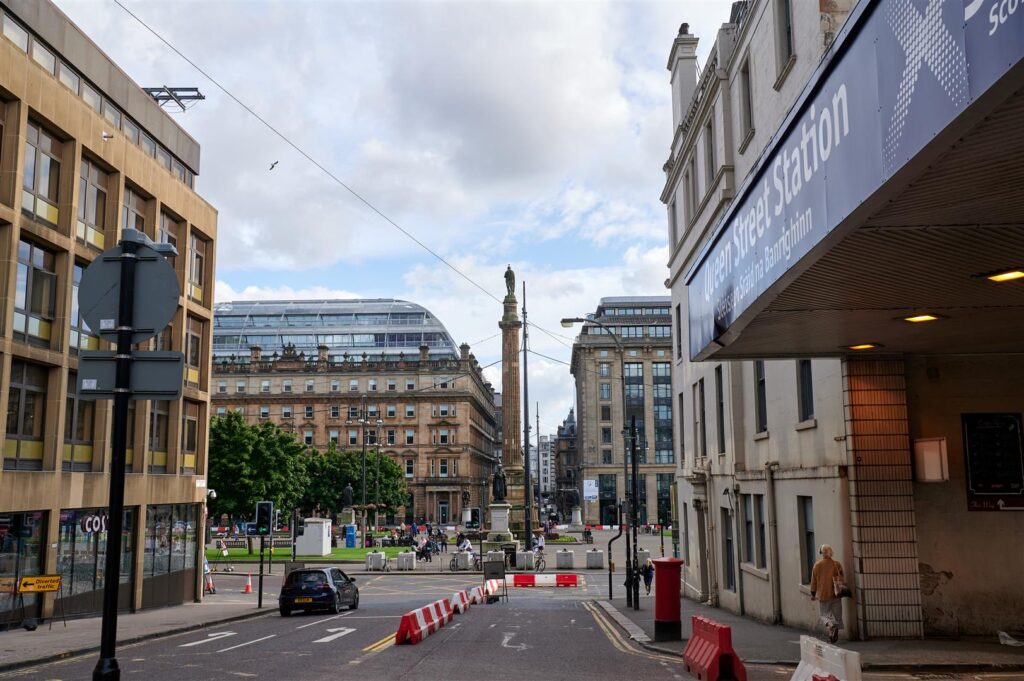
Widened footways and temporary cycle lanes installed throughout George Square and the surrounding streets ensure that those arriving by foot and wheel are able to safely and easily access any one of Queen Street station’s three entrance points.
The hope is that this will not only give people the space needed to physically distance, but will also increase the uptake of active travel in the city centre, resulting in fewer cars on the road.
Should this be effective, this will leave roads less congested for those that most need them, such as buses, taxis and emergency vehicles.
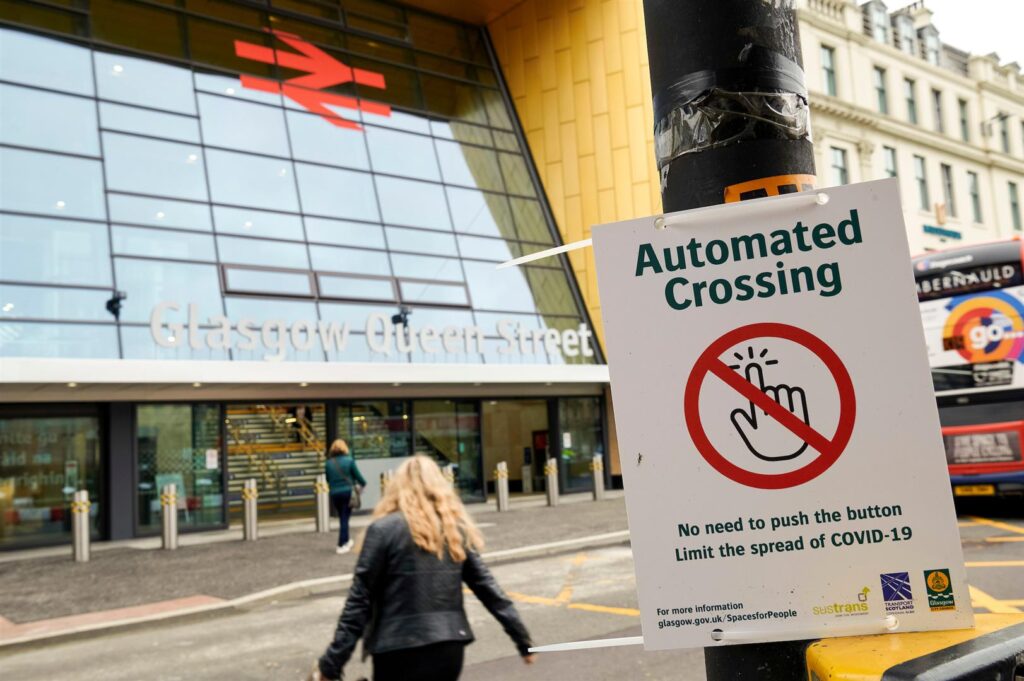
Automated crossings have also been introduced in the area in order to minimise the risk of spreading Covid-19 through shared surface contact points.
Central station
Each of Glasgow Central station’s four main access points now benefit from temporary changes designed to both satisfy the needs of passengers whilst making the most of the existing infrastructure.
By introducing a one-way traffic flow on Argyle Street to vehicles heading Westbound, temporary cycle lanes and widened footways could be installed along the route.


Not only has this reduced traffic congestion, but people now have ample space to safely distance from one another as they enter and leave the station, as well as increased opportunities to travel actively for those journeying by bike.
Temporarily reduced access and parking restrictions at Gordon street ensure that maximum distancing space is available to people. A pop-up cycle lane has also been installed to make active travel an easier option.
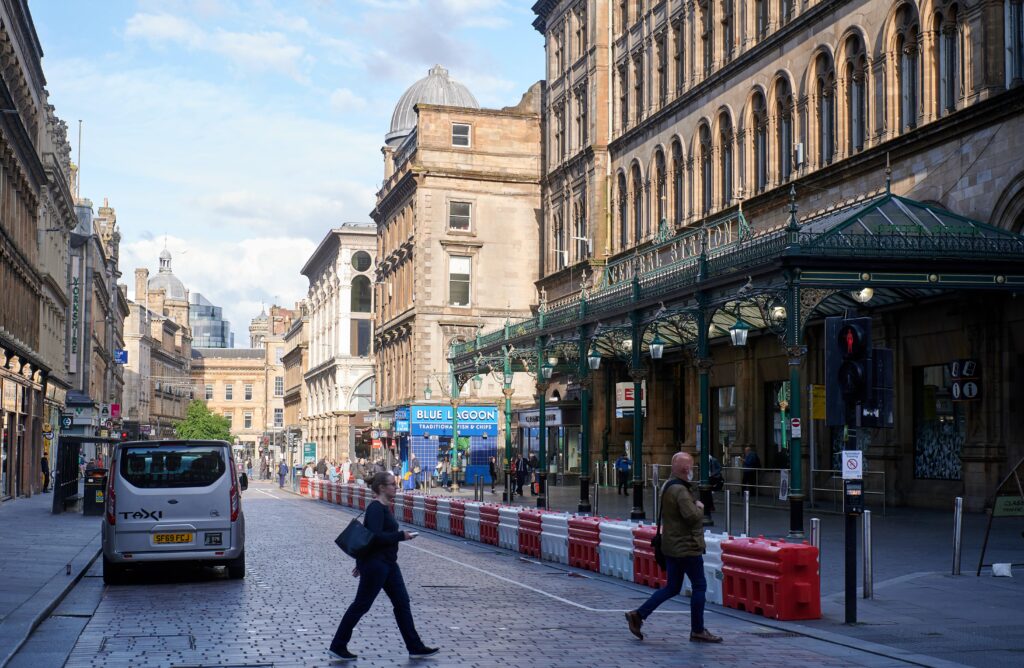
Lastly, the installation of filtering bollards at the Union Street and Hope Street entrances help ensure that those entering and exiting the station are able to do so as smoothly as possible, whilst also minimising the physical contact time between the different streams of passengers.
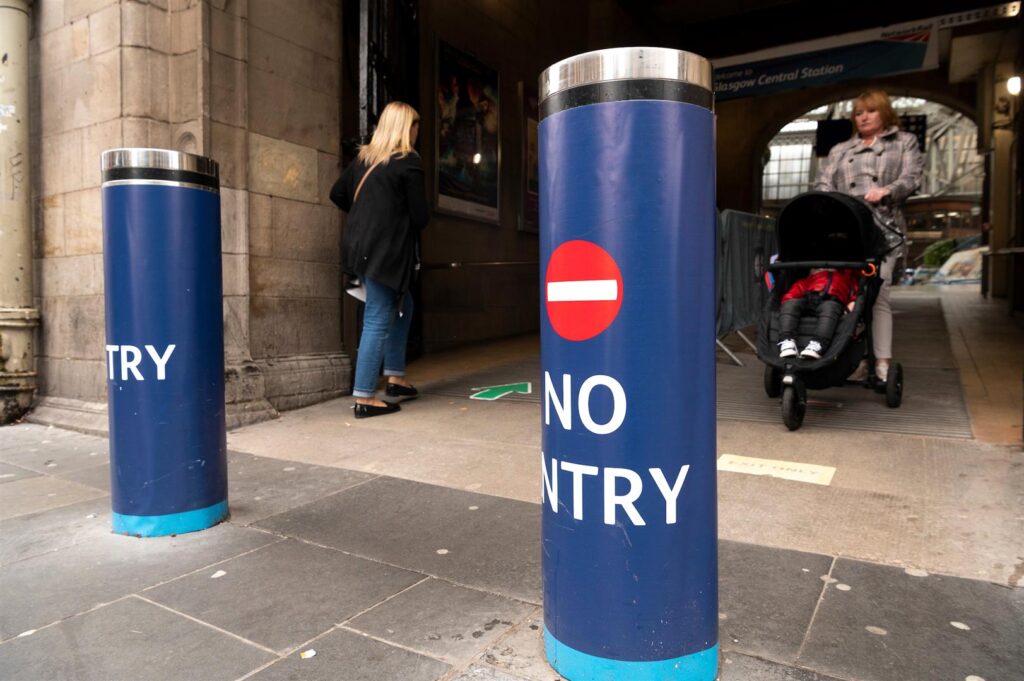
All of these changes may prove vital in the rush of weekday commuting hours.
‘New normal’ service
Public transport is a vital link to many in accessing work, shops and services. And ensuring they can use this safely is essential to help slow the spread of Covid-19.
For people without access to a car – or for those whose journeys cannot be completed by walking, wheeling or cycling – reliable bus, train and ferry services are a necessity.
If public confidence in transport providers to protect our health is not improved we could see an increase in the use of private cars for short journeys.
It could also have big impacts on our long-term ambitions of securing a greener future for Scotland.
Changes such as those implemented through Spaces for People will take steps to make public transport safer and keep our roads clear for those who need it most.